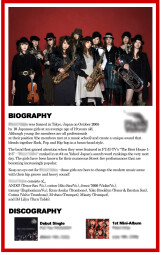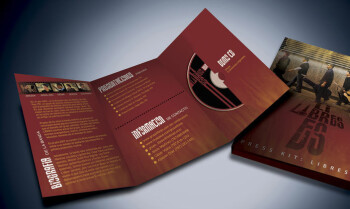You’ve recorded your album; you’re ready to get it out to the public. The best way to do this is to contact the newspapers, magazines and blogs specializing in your type of music until one of them becomes interested enough to do an interview and/or a CD review. He/she will be much more inclined to do so if you facilitate the work for him/her. How? By supplying him/her with a press kit!
The Press Kit
A press kit should contain all the information concerning your project, as well as all the necessary resources that a journalist might use to write an article about you or your music. Since most of the bloggers/journalists work online these days, we’ll stick to the Digital Press Kit for now using an email with an attached file including all of the information below:
- A short biography Concerning you and your band.
- A picture of the CD cover or concert that you’re promoting (just the cover, no need for credits, lyrics, names, etc)
- One or more photos of you or your band, maybe your logo if you have one.
Keep it short: don’t go over 5mb. Some emails accounts block large attached files. To get around this, make sure your entire press kit is available online and downloadable. Include the URL.
If you don’t have a website (you may not be taken seriously if you don’t), you could still include the link for a Dropbox with your files in it.
Keep your online journalist in mind. Photos only have to be 72 dpi for an online blog, whereas a print journalist will need the higher resolution of 300 dpi. The 300 dpi images will need to be online for download, but the 72 dpi versions will be used in the email.
Of course, don’t forget to include contact information EVERYWHERE; press kit, email, everywhere :
- Name of agent, artist or leader of band
- e-mail and telephone number
- Web site address for artist/band and/or: Facebook, MySpace, ReverbNation, BandCamp, SoundCloud, Twitter… Don’t bother giving all your social network reference links out, just list the two most often used and which contain the most information. If your information is spread throughout the networks, gather all the pertinent information together in one site(again, a website is useful for this reason).
Sizes and formats
Remember that your Press Kit is there to help the journalist gain some time. Be direct, concise and, as mentioned above, do not exceed 5mb of information.
You also have to make sure everyone can read the information. There are different operating systems and software formats to be aware of :
Compressed files
The Press Kit should be compressed and located in a folder named ‘nameofband_presskit’, in ZIP format, the most widely used (no RAR or SIT, or other exotic formats).
File names
Don’t use accents, capital letters or special characters when naming files. Replace all spaces with ‘_’ (underscore). This is the only way to be sure certain servers won’t block you out.
Text document formats
Text documents must be easy to open: *.doc (Microsoft Word), or *.rtf (Rich Text Format). If you want to spice things up with special text formatting, layout, etc., you can use *.pdf, but be aware that the receiver might not have PDF reader installed on his/her machine. If you send a PDF, also include the document in *.rtf or *.doc. In any case don’t use *.docx that only the recent Word owners can use, and especially not the *.odt (OpenOffice Writer which is NOT a standard), especially since you can save an OpenOffice Writer document or a LibreOffice document, as an *.rtf or *.doc.
Image formats
Pictures should be *.jpg with an 80 % compression rate, with logos using GIF 256 colors or PNG 24 bits. Don’t use BMP or TIFF, (too big, especially given the fact that each image shouldn’t be bigger than 1mb.




